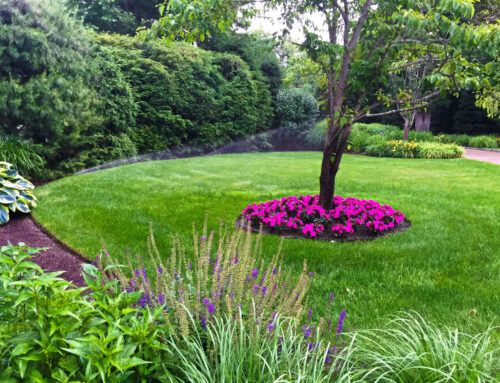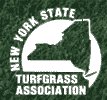Mulch envy. It’s a real thing. Who hasn’t happened upon the perfectly mulched landscape and sighed, overcome with mulch envy?
Mulch is a wonderful thing. Used right, it can help to conserve water, shield your plants’ roots from temperature extremes and discourage the growth of weeds.
Plus, it looks good. Decorative mulch can add color and texture to the space between plants. A nice layer of mulch can tie your garden together, giving your beds a clean, uniform appearance, causing rampant mulch envy in your neighborhood.
But there’s such a thing as too much mulch. Here’s a look at the right way to mulch your New York or Connecticut landscape.
How Deep Should It Be?
Mulch holds moisture in the soil while suppressing weed growth, but too much or too little mulch often has negative effects.
Excess mulch can hold too much moisture, making the soil waterlogged, which encourages harmful diseases in the plants.
Too little mulch doesn’t prevent weeds from sneaking through.
It’s sort of like Goldilocks and the three bears. You want the amount of mulch to be just right.
In most flower beds and vegetable gardens, 2 to 3 inches is a good depth. For heavy weed or grass suppression, put down a 6-inch layer of mulch.
Many mulching materials, including the ever-popular wood chips, settle over time. So add an extra half inch to one inch of mulch to account for that eventual decrease in volume.
Don’t Forget Pre-Mulch Prep
Mulching is kind of like painting: There are some things you need to do first, in order to ensure a solid job.
Pull or cut any weeds closely, if you’re mulching for weed control. It will help the mulch, and anything under it, to lay flat, and it will slow down the weed growth.
Lay down anything you want under the mulch, such as landscaping fabric or plastic. Try adding several layers of newspaper or cardboard if you prefer a biodegradable weed blocker.
Mulching To Protect Plants In The Winter
Has anybody noticed how cold it gets around here? New York and Connecticut aren’t exactly tropical.
You’re not the only one who’s been shivering. Your plants and bulbs appreciate a nice, warm blanket, too.
A layer of mulch about 3 inches deep is a great for seasonal protective mulching. If you use straw, make that up to 6 inches deep to provide the most protection.
In the spring, remove the protective mulch layer about two weeks before you plant. This is important. Deep mulch protects the soil, but it can damage the stems or trunks of plants and trees growing in the planting bed.
So thin out the layer of mulch in the areas immediately surrounding plants or trees. Avoid letting the mulch actually touch the stems or trunks. A mulching material piled up against a stem or trunk can cause rot, which seriously harms or even kills the plant.
Adding More Mulch
Over time, organic mulching materials decompose, leaving you with a thinner layer of mulch. Most materials settle even if they don’t break down into the soil.
So, at some point, you’ll need to add more.
The good news? Neave can help you out with all your mulching needs. Our experts will help you figure out the best plan for you. Do you want the mulch to control weeds? To cover a pathway? To inspire mulch envy?
We’ve got you — and your ground — covered. The best part: we’ll even do the math needed to figure out how much you need. Give the landscaping professionals at Neave Landscaping a call to start planning this and other aspects of your year-round landscape maintenance.
If you’re in the Hudson Valley at (845) 463-0592. If you’re in Westchester County, call (914) 271-7996; from Connecticut, dial (203) 212-4800. Or, fill out our simple web form, and we’ll contact you about setting up your free consultation.
























